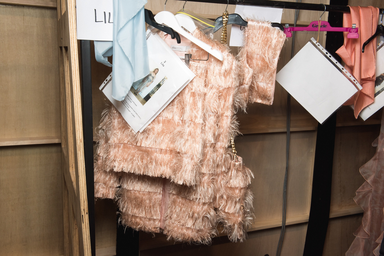Dame Mary Quant, the famed English fashion designer who popularized the miniskirt in the 1960s, passed away at the age of 93 at her home in southern England last week. The legendary pioneer was credited with inventing the miniskirt and matching tights that rocked London during the Swinging ’60s. Her eccentric style and mix-and-match garments added a whimsical touch to the previously modest style of women’s dress, revolutionizing women’s clothing style and taking the fashion world by storm.
Quant was born to a small mining family in 1930 in Blackheath, London. She was passionate about fashion from a young age; however, she pursued an arts education at Goldsmiths College on scholarship at the request of her parents. Shortly after quitting her job as a Mayfair milliner in 1955, Quant opened her own boutique, Bazaar, in Chelsea, England alongside her future husband Alexander Plunket Greene. The boutique quickly picked up popularity primarily due to Quant’s eccentric fashion taste and iconic bob haircut. Bazaar took advantage of popularized window display advertisements, displaying pieces Quant herself liked to wear.
In 1966, Quant unveiled the miniskirt: a skirt featuring shorter hemlines around seven to eight inches above the knee. The garment was a big hit among London’s youth culture given its shock factor and provocative nature compared to the previously reserved style of women’s clothing. The skirt was meant to be sexy and playful in contrast to the drab day dresses made popular amid the rationing and limited income brought about by World War II. Quant ditched the rigidness of pre-war styles in favor of fluidity to allow for freedom of movement and plenty of breathing room.
Until Quant, youth style in the 20th century was very similar to the clothing worn by elder generations. Women wore certain garments for public perception, given class played a pivotal role in shaping the culture of fashion. Silhouettes remained rooted in tight corsets and prim uniforms popularized in the 1910s. Quant’s introduction of explosive color and shorter hemlines emerged among a generation desperate for change and unwilling to conform to societal expectations.
Gone were the modest lengths and trim waists of dull matching sets and poodle skirts of the 1950s. Post-war London transformed under Quant’s guidance, shifting toward a movement sweeping fashion off its feet by giving a new meaning to feminism. The fashion renaissance of the swinging ’60s saw women take control over their bodies in a renewed fight for freedom through expression in clothing. A fire had been lit under the women’s rights movement, all with Quant standing by holding the match.
Quant was also known for popularizing hot pants and colorful tights paired with her miniskirts. The iconic daisy logo often associated with herself and her brand came to be synonymous with the mod movement, a sweep of modernism overtaking London and influencing fashion trends. Many of the collections she designed were inspired by the comfort of Italian sportswear; she wanted women’s comfort to take priority in her clothing. Her more casual styles featured loungewear, an American fashion trend that she popularized in England.
Quant focused on catering to the crowd of young, short-haired women eager for a chance to relish their newfound bodily freedom. The embodiment of her brand lay in the playfulness of her character and alluring nature of her clothing collections. She seized an opportunity and pushed it to its highest limits, taking advantage of the revolutionary women’s movement sweeping the country at the time to introduce a style she believed would take women to new heights. The power of Quant’s brand lay in the hands of women set on changing the world one miniskirt at a time.


